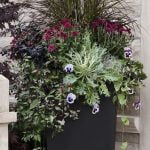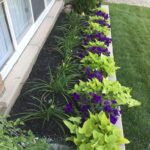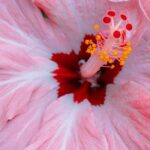Are you looking to add some greenery and beauty to your outdoor space, but don’t have a traditional garden bed? Large container gardening may be the perfect solution for you. In this article, we will explore a variety of large container gardening ideas, from choosing the right containers and plants to creative design and maintenance tips. Whether you have a spacious backyard or a small urban balcony, there are plenty of options for creating a stunning container garden.
When it comes to large container gardening, the possibilities are endless. From vibrant flowers to fresh herbs and even vegetables, there is no limit to what you can grow in a large container. In this article, we will delve into the world of large container gardening ideas, exploring different types of containers, plant choices, and design concepts that will help you create a beautiful and thriving garden in any space.
In addition to providing inspiration for your own container garden, we will also share practical tips on how to properly prepare and fill large containers, as well as how to care for and maintain your garden throughout the growing season. Whether you’re new to gardening or have years of experience, there’s something in this article for everyone looking to elevate their outdoor space with large container gardening ideas.
Choosing the Right Containers for Your Garden
When it comes to large container gardening, choosing the right containers is essential for the success of your garden. The size, material, and style of the containers can all impact the health and growth of your plants.
Size is an important factor to consider when choosing containers for your large container garden. Larger containers provide more room for root growth, reducing the frequency of watering and providing stability for larger plants. It’s recommended to choose containers that are at least 12 inches in diameter for most plants, but larger plants may require even bigger containers.
The material of the container also plays a significant role in maintaining a healthy garden. Terracotta pots are porous and allow air and water to penetrate, but they dry out quickly and may require more frequent watering. Plastic pots are lightweight, retain moisture well, and are durable, making them a popular choice for large container gardening.
Lastly, the style of the container should complement your garden design and personal taste. There are endless options available, from classic terracotta pots to modern metal troughs and wooden planters. Consider the overall aesthetic you want to achieve in your garden when selecting the style of your containers.
| Factor | Consideration |
|---|---|
| Size | Larger containers for more root growth |
| Material | Terracotta vs plastic vs other options |
| Style | Complementing overall garden design |
Selecting the Perfect Plants for Large Container Gardens
When it comes to large container gardening, the selection of plants plays a crucial role in the success of your garden. The right combination of flowers, herbs, and vegetables can create a beautiful and functional outdoor space. Here are some ideas for plants that thrive in large containers:
- Flowers: When choosing flowers for large container gardens, consider varieties that have a long blooming season and vibrant colors. Some popular options include petunias, geraniums, marigolds, and begonias.
- Herbs: Herbs are not only useful in the kitchen but also make great additions to container gardens. Some herbs that do well in large containers include rosemary, basil, mint, thyme, and parsley.
- Vegetables: Believe it or not, many vegetables can be grown successfully in large containers. Tomatoes, peppers, eggplants, lettuce, and carrots are just a few examples of vegetables that thrive in this environment.
It’s important to consider the specific growing conditions and maintenance requirements of each type of plant when making your selections. For instance, some plants may have different watering needs or soil preferences. Additionally, pay attention to the mature size of each plant to ensure they have enough space to grow properly within the containers.
Incorporating a variety of plants into your large container garden will not only add visual interest but also serve practical purposes. For example, mixing flowers with herbs and vegetables can attract pollinators like bees and butterflies while also providing fresh ingredients for cooking. By carefully selecting the perfect plants for your large container garden, you can create a beautiful and bountiful outdoor oasis.
Tips for Properly Preparing and Filling Large Containers
When it comes to large container gardening, proper preparation and filling of the containers are essential for the success of your garden. Here are some tips for ensuring that your large containers are properly prepared and filled to provide the best environment for your plants to thrive:
1. Choose the right containers: When selecting containers for large container gardening, opt for durable, weather-resistant materials such as fiberglass, resin, or stone. Make sure the containers have proper drainage holes to prevent waterlogging and root rot.
2. Use high-quality soil: Fill your large containers with a well-draining potting mix that is specifically formulated for container gardening. Avoid using garden soil, as it can become compacted and hinder root growth in the confines of a container.
3. Consider vertical gardening: Large container gardens offer excellent opportunities for creative design and layout ideas such as vertical gardening. Utilize tall containers or trellises to create stunning vertical arrangements of flowers, herbs, or vegetables in a limited space.
Properly preparing and filling large containers is crucial for the health and vitality of your plants in a container garden. By following these tips, you can ensure that your large container garden provides an attractive and flourishing display of nature’s beauty in any setting, whether it be a small patio or an urban environment.
Creative Design and Layout Ideas for Large Container Gardens
When it comes to large container gardening, getting creative with design and layout can make a huge difference in the overall look and functionality of your garden. One popular idea for large container gardens is to utilize vertical and tiered arrangements, which not only maximize space but also add visual interest to your outdoor or indoor area.
Vertical gardening involves growing plants upward, using trellises, stakes, or other structures to support climbing plants. This technique is particularly useful for small spaces and urban environments where ground space may be limited. On the other hand, tiered arrangements involve stacking containers at different levels, creating a cascading effect that adds depth and dimension to your garden.
The key to successful vertical and tiered arrangement in large container gardening lies in choosing the right plants and containers. For vertical gardening, consider fast-growing vines like morning glories, clematis, or ivy. For tiered arrangements, opt for trailing plants like petunias, sweet potato vine, or calibrachoa that will spill over the edges of each container. Additionally, select containers of varying sizes and heights to create an aesthetically pleasing display.
| Vertical Gardening Plants | Tiered Arrangement Plants |
|---|---|
| Morning Glories | Petunias |
| Clematis | Sweet Potato Vine |
| Ivy | Calibrachoa |
By incorporating these large container gardening ideas into your own outdoor or indoor space, you can create a stunning and unique display that maximizes your planting potential while elevating the aesthetics of your surroundings. Remember to carefully plan out your design and select the right plants and containers to achieve the best results with vertical and tiered arrangements in large container gardens.
Maintenance and Care for Large Container Gardens
Watering
Watering is an essential aspect of maintaining large container gardens, as the soil in containers tends to dry out more quickly compared to traditional garden beds. It’s important to keep a close eye on the moisture levels of the soil and water as needed.
One effective method is to stick your finger into the soil to test for dryness before watering. Additionally, investing in a soaker hose or drip irrigation system can help ensure consistent and thorough watering for large container gardens.
Fertilizing
Fertilizing is crucial for providing adequate nutrients to the plants in large containers, especially since the soil in containers can become depleted more rapidly than garden beds. Select a high-quality, slow-release fertilizer and follow the manufacturer’s instructions for application. In addition, consider using organic fertilizers to promote healthier and more sustainable growth in your container garden.
Pruning
Proper pruning is necessary for keeping plants in large container gardens healthy and looking their best. Regularly inspect your plants for any dead or diseased foliage, and promptly remove it to prevent the spread of pests and diseases. Additionally, trimming back overgrown branches or stems will encourage new growth and maintain the desired shape and size of your container garden plants. Be sure to use clean pruning tools to minimize the risk of transmitting any infections between plants.
Solving Common Challenges of Large Container Gardening
Dealing With Pests in Large Container Gardens
One common challenge of large container gardening is dealing with pests that can harm your plants. Whether it’s aphids, snails, or caterpillars, these unwanted visitors can quickly damage the foliage and fruits of your carefully tended garden. To combat this issue, consider using natural insect repellents such as neem oil or homemade garlic spray. Additionally, regularly inspecting your plants for signs of infestation and promptly removing any affected leaves or stems can help prevent pest problems from becoming overwhelming.
Addressing Diseases in Large Containers
Diseases such as powdery mildew, botrytis, and root rot can pose a threat to the health of your large container garden. To reduce the risk of these diseases taking hold, it’s important to choose disease-resistant plant varieties whenever possible.
Proper watering practices, such as avoiding overhead watering and ensuring good drainage, can also help prevent the onset and spread of fungal diseases. In case an infection does occur, swift action is crucial – remove infected plant material immediately to prevent the disease from spreading.
Protecting Plants From Weather Factors
Weather factors such as extreme heat, cold snaps, strong winds, and heavy rainfall can all impact the well-being of plants in large container gardens. To protect your garden from adverse weather conditions, consider relocating containers to sheltered spots during periods of intense heat or cold.
Providing windbreaks and using mulch to regulate soil temperature and retain moisture can also help mitigate the effects of weather on your plants. Finally, being proactive by monitoring weather forecasts and taking preventive measures when necessary can go a long way in preserving the health and vitality of your large container garden.
Inspiring Large Container Gardening Ideas for Small Spaces and Urban Environments
In conclusion, large container gardening can be a rewarding and beautiful way to bring the joys of gardening to small spaces and urban environments. By carefully choosing the right containers, plants, and layout ideas, anyone can create a flourishing garden no matter the size of their outdoor space. With the proper maintenance and care, these gardens can thrive and provide a green oasis in even the most urban settings.
When selecting containers for large container gardening ideas in small spaces, it’s important to consider the size, material, and style that will best fit your needs. Whether it’s hanging baskets, raised beds, or vertical gardens, there are countless options to choose from. When combined with the right selection of flowers, herbs, and vegetables, these containers can transform any small outdoor area into a lush and vibrant garden.
As with any type of gardening, it’s important to address common challenges such as pests, diseases, and weather factors when cultivating large container gardens. By staying vigilant and taking preventative measures such as proper watering, fertilization, and pruning – these challenges can be overcome effectively.
Large container gardening offers endless possibilities for creating a stunning outdoor space in even the smallest of environments. With careful planning and execution using the tips outlined in this article, anyone can enjoy the beauty of their own thriving urban garden oasis.
Frequently Asked Questions
What Plants Are Best for Large Pots?
Plants that are best for large pots are typically ones that have a deep root system, such as shrubs, small trees, or large perennial flowers. These plants need the space and stability that a large pot provides to thrive.
How Do You Arrange Plants in a Large Container?
When arranging plants in a large container, it’s important to consider the height and spread of each plant. Place taller plants in the center or towards the back, with shorter plants surrounding them. Consider using a “thriller, filler, spiller” approach for visual interest.
What Do You Fill Extra Large Planters With?
Extra large planters should be filled with a quality potting mix that provides good drainage and aeration for the plants’ roots. A mix of compost, perlite, and peat moss can help create an ideal growing environment for larger plants.

Welcome to my gardening blog! I am passionate about plants and enjoy sharing my knowledge and experiences with others. In this blog, I will write about everything related to gardening, from tips on how to get started to updates on my own garden projects.





